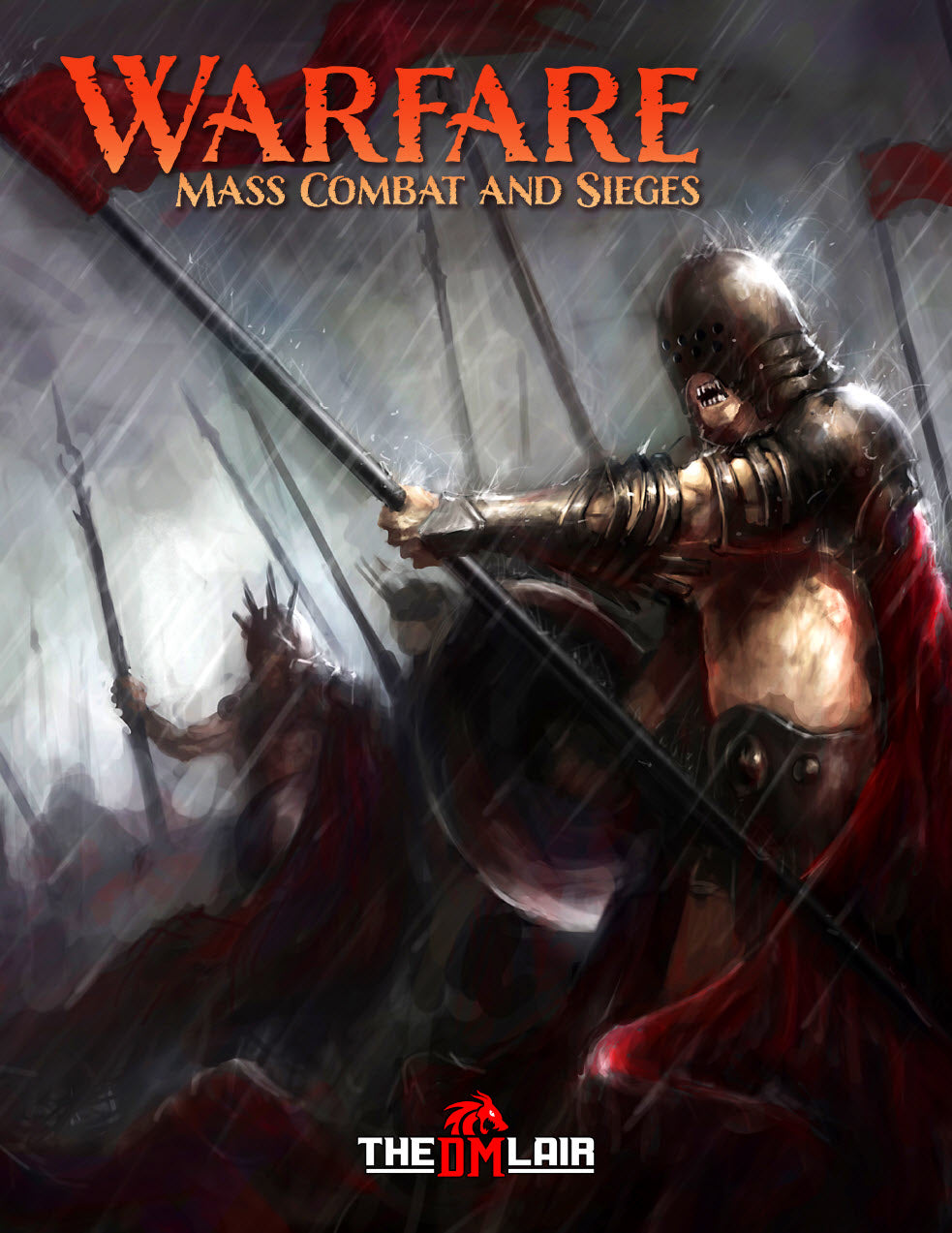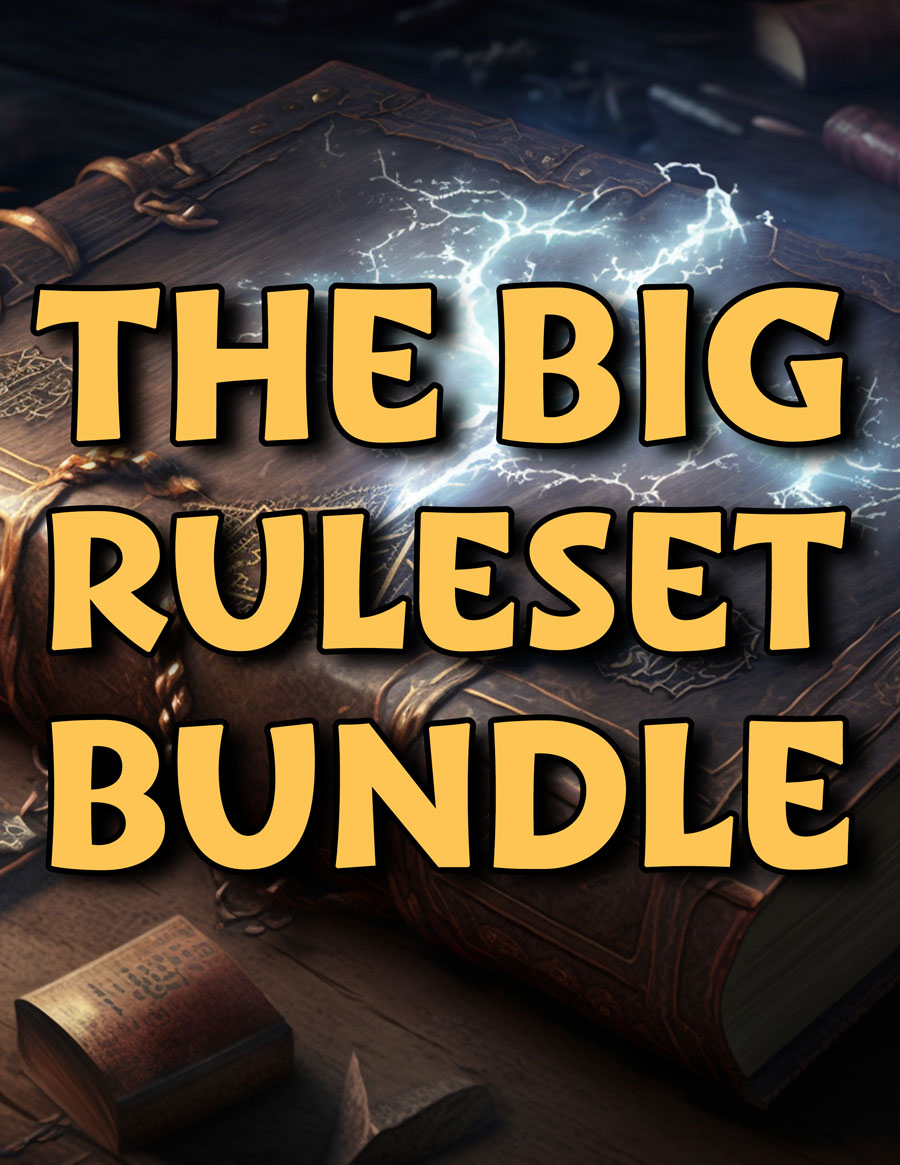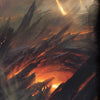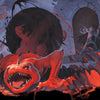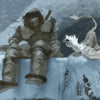How to Run D&D Mass Combat
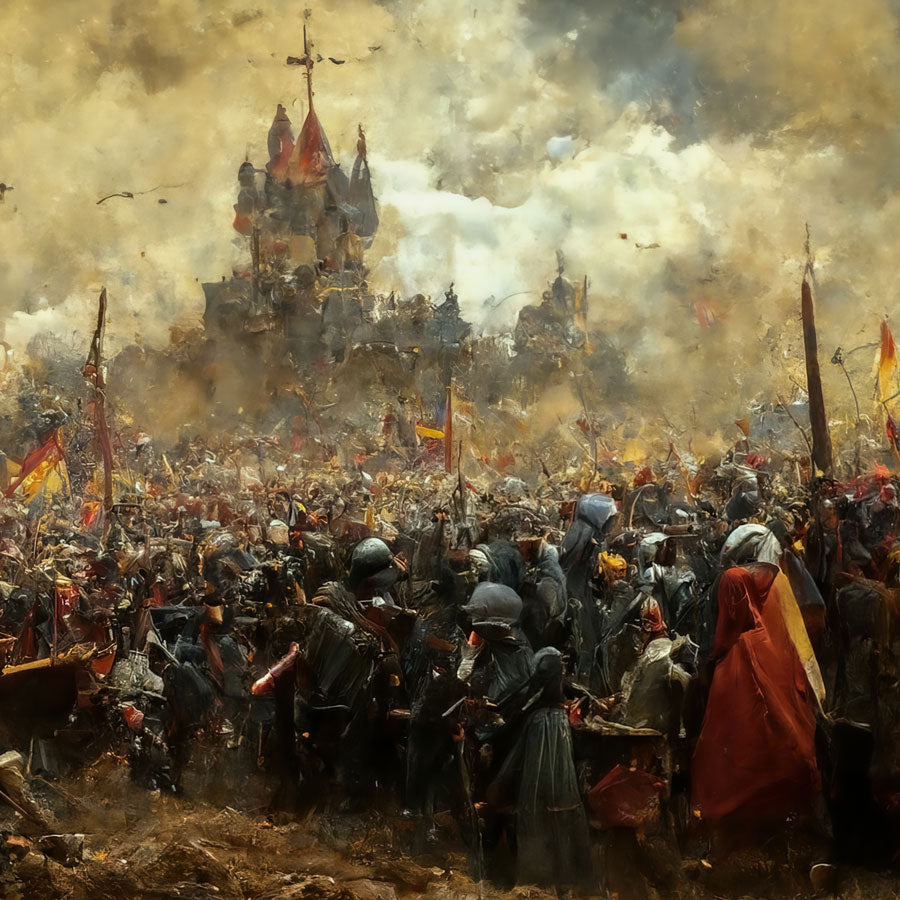
The first time I ran mass combat for one of my RPG groups was a DISASTER. We were playing D&D at the time, and it became clear very quickly that the core rules for combat are HORRIBLE once you start to have a large number of combatants in the battle. The combat dragged on forever, and in my opinion, was fairly boring.
So, today we’re going to discuss HOW you might consider running mass combat for D&D and other tabletop RPGs – AND while we’re at it, we’ll discuss sieges as well, because the same principles apply. You see, after that initial failure of mine, I did some thinking and learning, and now I have some better approaches to share with you.
Watch or listen to this article by clicking the video below.
Think of the Characters as a Special Operations Strike Force
Back in 2017 I presented my group the following scenario: War Captain Yagnatz “the Hand” Brokenshield has lead an army of orcs and giant-kin to lay siege to Gauntlet Hall. A garrison of soldiers holds the fortification, but they can only hold out for so long. The heroes would need to strike blows against critical parts of the orc army in order to lift the siege.
Once they arrived at the castle (magically, of course, to get past the besieging army), Civilar Casey and Mizela Faust briefed them on the situation – which was quite dire. And then word reached them that a massive battering ram paused by a squad of hill giants was making its way to the castle gates. Civilar Casey requested they assist the garrison’s soldiers in repelling the ram and giants, and the heroes managed to do so successfully.
Afterward, the group was presented with several options of how they might use their specific skill set to strike critical blows against the besieging army, weakening them enough that they would either break their siege, or allow the soldiers to sally forth and scatter their foes. First, there were four gigantic catapults manned by ogres and frost giants that had just been staged and would soon begin raining down destruction on the castle; they needed to be stopped. And second, the location of the command tent of the war captain and his lieutenants was no secret; if the characters could covertly eliminate the leaders of the army, an important blow would be struck against them.
And then my players were allowed to choose which objective to tackle first. They chose the catapult crews and then went after the war captain and his lieutenants. I remember that adventure being tons of fun, and after they destroyed the catapult crews and attacked the leaders, a remnant of the leadership that managed to escape on the back of their Nightmare mounts to led a counterassault on Gauntlet Hall through the underground crypts.
So, you can see here that we did not play out the siege blow by blow. We did not run all of the orcs and giants and garrison soldiers on a battle map. We did not try to reconstruct siege warfare using game mechanics. Instead, the group was treated as a special operation strike force and presented with various objectives that they could accomplish that would swing the tide of battle in favor of the garrison. This allowed us to use core game mechanics for combat in the way that they were intended and designed for, namely for small groups fighting each other, BUT it still allowed the players to act meaningfully in determining the outcome of the siege.
Now, the way you design this sort of thing is the way you would design any adventure, really. At their core, most adventures consist of a series of encounters – some combat, some exploration, some social interactions – followed by a climatic confrontation, usually with the boss and his cronies. You balance the various encounters for the characters’ level – or not…– and if your game system uses an “adventuring day” mechanic such as 5e, then you consider that as well.
If you want a premade adventure that features exactly this type of mass combat, check out Heroes & Horror, the October 2022 issue of Lair Magazine. The first adventure in the three-part adventure arc features a siege on a city, in which the characters act as a special strike force to lay a decisive blow to their enemy. It even has degrees of success and failure, depending on the actions the characters take. Which reminds me…
The thing that you want to ADD is a way for you to determine the effect of their successes and failures while carrying out the specific mission objectives. For instance, my group was NOT entirely successful when they assaulted the war captain’s command tent. Some of the leadership escaped on their Nightmares, and so I was left to consider WHAT would be the result of their failure. I decided that the leaders who escaped would immediately organize a counterassault on Gauntlet Hall through the crypts. In that case, it was me thinking on my feet, as game masters often have to do, but you could certainly plan out the consequences of failure in advance so that you’re more prepared than I was.
Now, the example I gave was specifically for a SIEGE, but the exact same approach and principles apply for MASS COMBAT. When two or more armies meet on the field of combat, the characters are treated as a special operation strike force, and you, the game master, present them with various objectives that they might pursue to help their side of the conflict triumph.
For instance, there could be a small group of elite cavalry flanking the crossbowmen in the woods that need to be dealt with. There might be several War Machines approaching the front lines that need special attention. The characters might go on a surgical strike against the general and elite guard of the enemy army. The enemy might have a special operation strike force of THEIR OWN that is doing considerable damage to the characters’ army, and your players’ characters could track down and eliminate them. And then, of course, the larger combat is taking place AROUND the characters as they go on these special missions; it serves as the backdrop that you describe narratively at times to set the scene and establish the atmosphere.
Resolve Everything Else NARRATIVELY
After my player’s characters had struck decisive blows against the besieging army – stopping the battering ram, destroying the catapults and their crews, confronting the war captain, and defeating the army’s final Hail Mary assault through the catacombs – I described the orc and giant army lifting their siege, breaking camp, and beginning their march back into the mountains whence they came.
You see, the strike force missions we played out at the table, but all the other details of the siege I simply described to my players narratively. We never played out garrison soldiers fighting common orcs on the battlefield or anything like that. All of that was handled narratively so that we ONE focus on the HEROIC moments of the characters and avoid parts of the game that didn’t have good game mechanics to support them. Ultimately, this resulted in a much more enjoyable game experience than playing everything out. So, naturally, this is what I would suggest you consider as well.
Of course, don’t forget that what happens in the parts of the mass combat or siege that you don’t play out and what you instead describe narratively to your players – should be based on the successes and failures they experienced on their strike force missions. You want to make sure that their ACTIONS have the proper consequences and actually play a role in determining the final result. Otherwise, your players will be left wondering, “What was the point?”
For instance, if they succeed on all their missions, but the enemy army still WINS, they will feel like everything was POINTLESS and their actions didn’t matter. Trust me, that will be DEEPLY unsatisfying to them. If you, the game master, for the sake of a situations you’re setting up, must needs have an enemy army win a battle or a siege, then you shouldn’t play any part of it out at the game table. You should just describe what happens, and then pick the game up from there, at the point where the characters CAN influence outcomes.
There’s nothing wrong with setting up problematic situations in the game – that’s literally the job of the game master, after all – but once the characters enter the equation, they should be able to affect outcomes, otherwise, why are they playing the game? The converse is true as well: If your players’ characters FAIL most or all of their strike force missions, and you still have the enemy army LOSE the mass combat or siege, the same problem exists: the characters’ actions were pointless and had no effect on the final result of the situation.
As a game master, you should always keep in the back of your mind that your players MIGHT FAIL, and that if they do, you will need to figure out what that means and where to go from there. I strongly recommend not cheapening their failure by having everything turn out okay anyway. For me at least, when I’m a player, that is DEEPLY DISSATISFYING.
Use a Light-Weight Ruleset
If your heart is set on actually playing out the details of mass combat or sieges – and your players are onboard, too – then my recommendation is to find a LIGHT-WEIGHT ruleset that you can use for that purpose. What I mean by “light-weight” is rules that are only 5 pages or so, and that you and your players can quickly learn and start using.
Because here’s the thing: if you go out and buy an entire 200-page book on mass combat, the chances are this is what’s going to happen. First, it takes you, the game master, quite some time to read and learn the rules. Second, it then takes you even more time teaching your players the rules – which will probably take away from game time as you’ll likely do that during the game sessions.
I mean, you could lend the book to your players, but all experienced game masters know that the chances of players actually reading and learning the rules would not be that great. This is not intended as a knock against players either by the way; I’m simply acknowledging a reality that I’ve learned as a game master.
However, if you pick up some short, easy-to-learn mass combat rules, the chance of you being able to learn them yourself AND teach them to your players increases exponentially. Furthermore, every time mass combat comes up in your game – assuming it happens more than once – the burden of brushing up on the rules and helping your players remember the details becomes that much lighter.
Now, I imagine that there are lots of light-weight mass combat rule sets out there that you could pick up. However, if you’re running 5e, my team and I created and playtested a mass combat ruleset specifically for it. It’s called “Warfare: Mass Combat and Sieges” and the rules are literally 5 pages long. It contains ready-to-use Combat Unit stat blocks for several factions: City Defenders, Goblinoid Raiders, Forest Wardens, and the Undead Horde – But, the ruleset also explains how you can create your own Combat Units based on ANY in-game creature or monster. We’ve designed it to be super versatile and as easy to learn and use as possible.
Of course, we haven’t just published this one ruleset to help game masters fill in the gaps in their games. If you want even more rulesets that you can easily incorporate into your games, check out our Big Ruleset Bundle, which includes 10 rulesets for use in your games.
-
Posted in
Game Master How-To Articles

